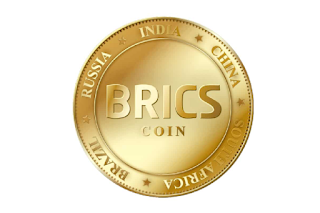This article delves into the advent of the new BRICS currency, its potential implications on global finance, and the opportunities and challenges it presents. Representing a shift in global economic power, this new currency symbolizes the rising influence of Brazil, Russia, India, China, and South Africa in the international financial system.
In recent years, the economic world has been turned on its head by the advent of the new BRICS currency. This innovative financial instrument has opened up new possibilities in the economies of Brazil, Russia, India, China, and South Africa, collectively referred to as the BRICS nations.
Launched as a bold attempt to reshape global finance and establish a potent counterweight to the traditionally dominant currencies such as the US Dollar, Euro, and Japanese Yen, the new BRICS currency has indeed marked a revolutionary shift. This initiative arises from the need to strengthen the financial resilience of these emerging economies, allowing them to be less reliant on the West.
The creation of the new BRICS currency signifies the BRICS nations' growing assertion of their economic power. The shift towards a unified currency symbolizes the BRICS's increased collaborative efforts, highlighting their growing interdependence and common economic interests. With the BRICS nations accounting for about 25% of the world's GDP and 40% of its population, their unified currency carries a substantial weight and potential to shift global economic dynamics.
This move aims to boost intra-BRICS trade by reducing transaction costs associated with currency conversion and exchange rate risks. This could further integrate their economies and possibly lead to higher economic growth rates in the future.
The introduction of the new BRICS currency also presents an opportunity to diversify foreign exchange reserves. For long, the US Dollar, the Euro, and other major Western currencies have been a prominent component of the foreign exchange reserves of many countries. The new BRICS currency adds an alternative and potentially more stable reserve currency that could hedge against volatility in the traditional markets.
However, the road towards the widespread acceptance of the new BRICS currency does not come without challenges. Economic disparities among the BRICS nations, varying levels of political commitment, and other geostrategic factors could affect the currency's stability and international trust. Therefore, it becomes pivotal for these nations to implement sound monetary policies and maintain economic stability to foster trust in the new currency.
As the BRICS nations have introduced this currency, they have also signified their desire to rewrite global financial rules. The new BRICS currency stands as a testament to their assertiveness and a symbol of the shifting balance of economic power in the 21st century.
Although the new BRICS currency's effect on global finance is still unfolding, its potential impact is undeniable. As the BRICS nations navigate this new path, the global community watches closely. The success or failure of this currency could reshape the dynamics of international trade and global economic power.
In conclusion, the new BRICS currency is more than just a medium of exchange. It symbolizes a tectonic shift in global economic power, signaling the arrival of BRICS nations as major players in the international financial system. Its future will be a major determinant in shaping the future of global finance.
As we continue to monitor and assess the ongoing evolution and implications of the new BRICS currency, it is clear that we are witnessing a historic chapter in global economics. Whether this endeavor will succeed or fail remains to be seen, but the direction taken by these five nations serves as a reminder of the dynamic and ever-changing nature of our world's financial landscape.
Tags
General Topics


